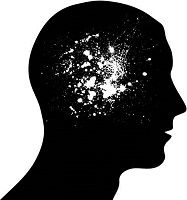Article
Where a Migraine is Treated May Contribute to Likelihood of Recurrence for Children
Author(s):
Studies show that certain factors, including age, gender, and, importantly, location of treatment may contribute to the increased incidence of migraines.

The factors behind the initial development of migraines are not well-understood; nor are the factors that may contribute to migraine recurrence. But a review in Headache suggests that certain factors, including age, gender, and, importantly, location of treatment may contribute to the increased incidence of migraines.
The review didn’t look at migraine sufferers overall, but at recurrence of migraine after acute treatment in an infusion center or inpatient setting in children and adolescents. This is a particularly tough clinical challenge, as both diagnosis and treatment of migraine in children is often more difficult than it is for adults. The paucity of hard clinical evidence in children and adolescents adds to the complexity.
The retrospective chart review in Headache looked at patients presenting for treatment of an intractable migraine to the outpatient infusion unit or inpatient unit at Cincinnati Children’s Hospital Medical Center (CCHMC). The review examined diagnosis and treatment by age, gender, location (whether outpatient or inpatient), migraine duration and severity, recurrence of migraine at 48 and 72 hours after discharge, and the potential impact of the addition of corticosteroids to treatment protocols.
Clinical research on the use of corticosteroids to treat migraine, although also sparse, has been mixed. Some studies have shown them to be effective in otherwise refractory migraine, but other research has shown no or questionable efficacy.
Charts from 207 pediatric patients were analyzed. Using logistic regression analysis: location, gender, diagnosis, and age were all found to be significant predictors of migraine recurrence (P < .05). Importantly, patients treated in the inpatient setting were significantly less likely to experience recurrence compared to patients treated in an outpatient infusion unit (OR = 0.32; 95% CI 0.17-0.61, P = .0002). Male patients with a diagnosis of episodic migraine were significantly less likely to experience recurrence than male patients with chronic migraine (OR 0.17; 95% CI 0.04-0.73; P = .0074).
The inclusion of corticosteroids in the study population showed no significant reduction in migraine recurrence. Interestingly, the probability of migraine recurrence decreased with age for episodic migraine patients, but the opposite was true for chronic migraine patients, who were more likely to experience a recurrence if they were older.
Much more research is needed to determine other factors that may contribute to migraine recurrence in children and adolescents. Of course, any future research is also likely to be retrospective in nature. But this study does add to a growing body of evidence that age, gender, diagnosis, and location are all factors that should be considered when treating children and adolescents for migraine.





